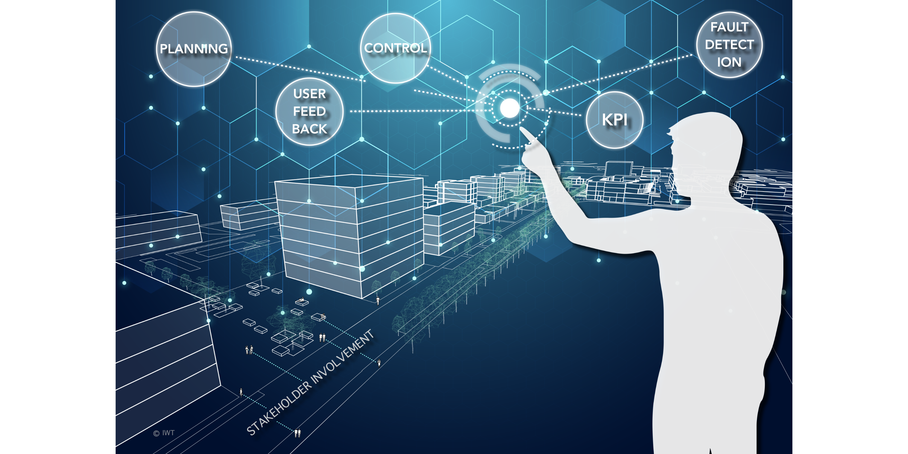As part of the Climate-Neutral TU Graz 2030 project and the measures that have been defined to support decarbonization, the Inffeldgasse Campus will become a Living Lab, referred to as the Innovation District Inffeld. Here, TU Graz will consider and test energy systems of the future together with partner institutions.
In addition to reducing greenhouse gas emissions, the goals defined for the Innovation District Inffeld are to increase the share of renewable energy used for heating, cooling, electricity and mobility, to reduce the energy consumption per square metre and employee, to increase the flexibility of energy demand, and to integrate user requirements in order to regulate heating, cooling and ventilation.
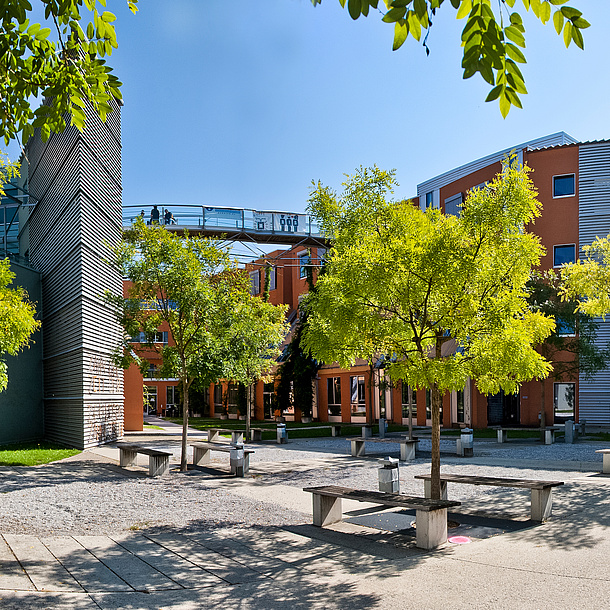
Contact
Siegfried PABST
Dipl.-Ing.
Buildings and Technical Support
Phone: +43 316 873 6537
siegfried.pabst@tugraz.at
Current projects related to the Innovation District Inffeld
UserGRIDs
Building maintenance and operation are associated with considerable greenhouse gas emissions, and these must be significantly reduced in order to achieve climate goals. As part of the UserGRIDs project, Digital Energy Services (DES) are being developed at the Innovation District Inffeld. These will enable the campus energy systems, which are characterized by a highly fluctuating demand profile, to be operated and planned more effectively.
All data relevant to energy performance will be collected on an information and communication technology (IoT) platform. These data include measurement data from the energy systems (e.g. temperatures, power), as well as data from other digital systems (e.g. room occupancy, weather data, price signals). Using DES in the areas of energy management and energy structure planning will result in the creation of a comprehensive, complete system that is supported by machine learning methods and thermal modelling. In turn, this system can be applied to reduce emissions and improve the economic operation of the campus with the involvement of affected stakeholders.
In this way, the Innovation District Inffeld will become a pioneering example of how new digital energy services can be used.
Defined goals are to increase user satisfaction on site, to ensure the optimal and robust operation of the energy system, and to consistently expand the capacity to achieve a zero-emission district. The developments at the Innovation District Inffeld will ultimately be formulated as model solutions and, as such, can be used as a basis for the development of business models.
Contact: Thomas MACH
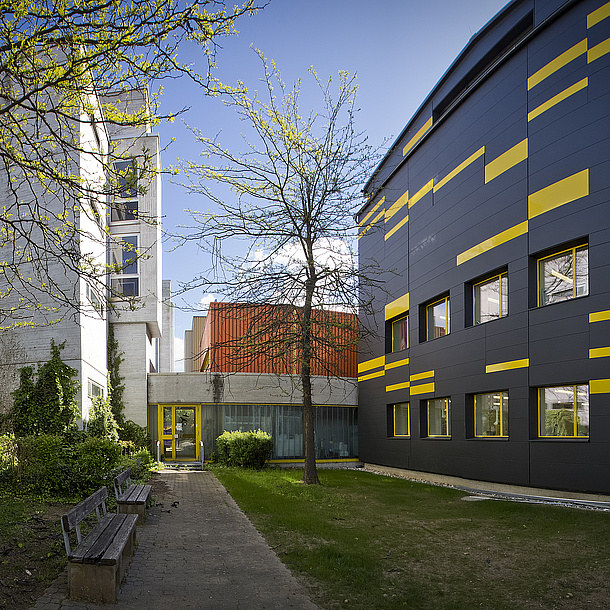
COOL-QUARTER-PLUS
Greenhouse gas-neutral cooling of office and research quarters
The COOL-QUARTER-PLUS project has been developed to replace inefficient individual devices that are used to cool buildings with coordinated cooling concepts that operate at the neighbourhood level. The focus will be placed on office and research districts, such as the Innovation District Inffeld. By performing a dynamic life cycle cost calculation and an analysis of the grey and operational greenhouse gas emissions, it will be possible to comprehensively evaluate different concepts.
Contact: Thomas MACH
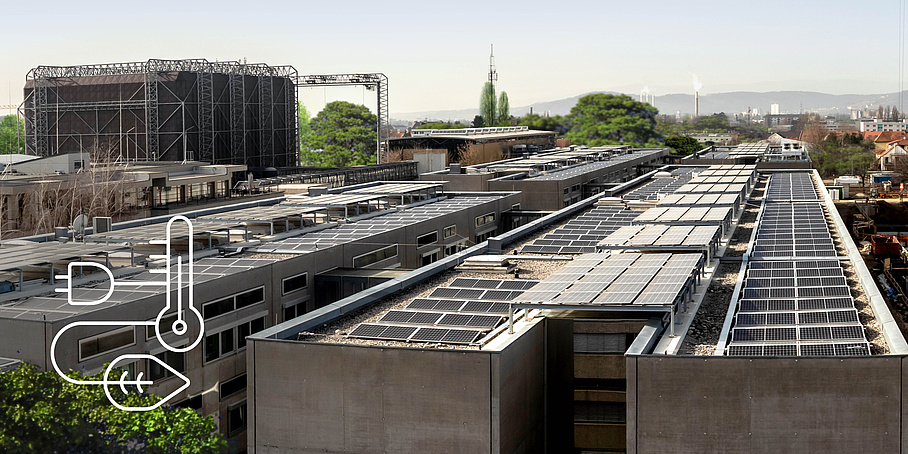
INFRAMONITOR
Monitoring water and energy use in TU Graz buildings: This will be possible with the INFRAMONITOR project. In this project, we will demonstrate how an Internet-of-Things platform enables real-time communication between buildings, various facilities and staff, as well as how higher-level artificial intelligence can be used to optimise and monitor energy and water consumption. Intelligent and sustainable buildings and energy systems will be developed in the project. The first demonstrator is the Electronics Based Systems Center on the Inffeldgasse Campus, where the water and energy supply will be monitored and visualized in real time.
The INFRAMONITOR is currently being further developed in several national and European projects. For example, feedback received from employees regarding thermal comfort in offices will be integrated directly into the building's control strategy, so that an optimal indoor climate can be maintained at all times. In the medium term, INFRAMONITOR will monitor and optimise the entire water and energy supply at TU Graz.
Contact: Gerald SCHWEIGER
Project Inframonitor
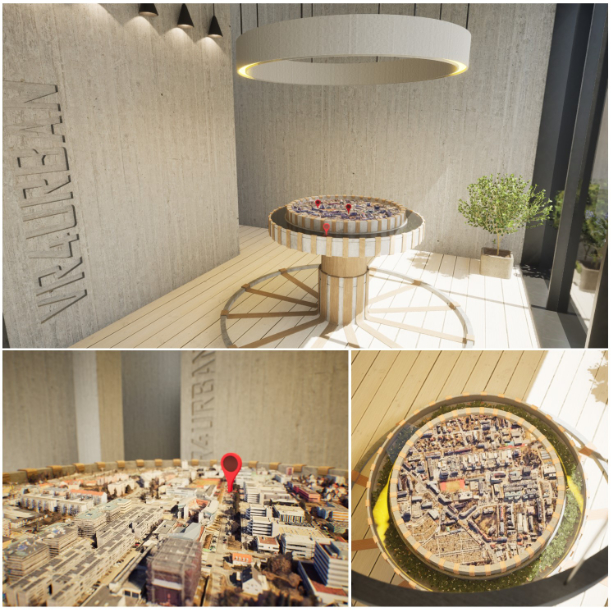
VR4UrbanDev
Using a digital twin, it is often possible to represent complex facts and data in an easy-to-understand way, allowing for realistic simulations of possible changes. In the VR4URbanDev project, researchers at TU Graz are combining this principle with virtual reality technology to create an immersive and interactive space.
The “Innovation District Inffeld” is used as the test object: the model is fed real-time energy-related sensor data or data from building simulations (e.g., energy requirements for heating, cooling or electricity), data from building physics simulations and microclimatic outdoor space simulations as well as data on the influences and effects of climate change or climate change adaptation measures. In this way, complex changes can be presented and analysed virtually in a way that is clear and easy to experience.
In the future, the system will be a particularly useful tool for experts in such fields as energy research, planning and facility management, which is why actively involving these stakeholders in project development was particularly important to us.
BEYOND
The BEYOND research project has been created to establish the technological foundation for next-generation energy services. This next generation is characterised by interactions among the following technologies:
- Virtual reality tools that can be used to visualize data and real-time interactions with the real building object,
- Machine learning and physical simulation tools that can be used to represent the real-world impact of actions and decisions,
- IoT platforms that enable bidirectional real-time communication with the building and its users.
The technological developments will be tested and evaluated on the basis of two use cases, the energy services Human Aspects in Buildings
and Predictive Maintenance and Fault Diagnosis
.
Contact: Christina HOPFE
